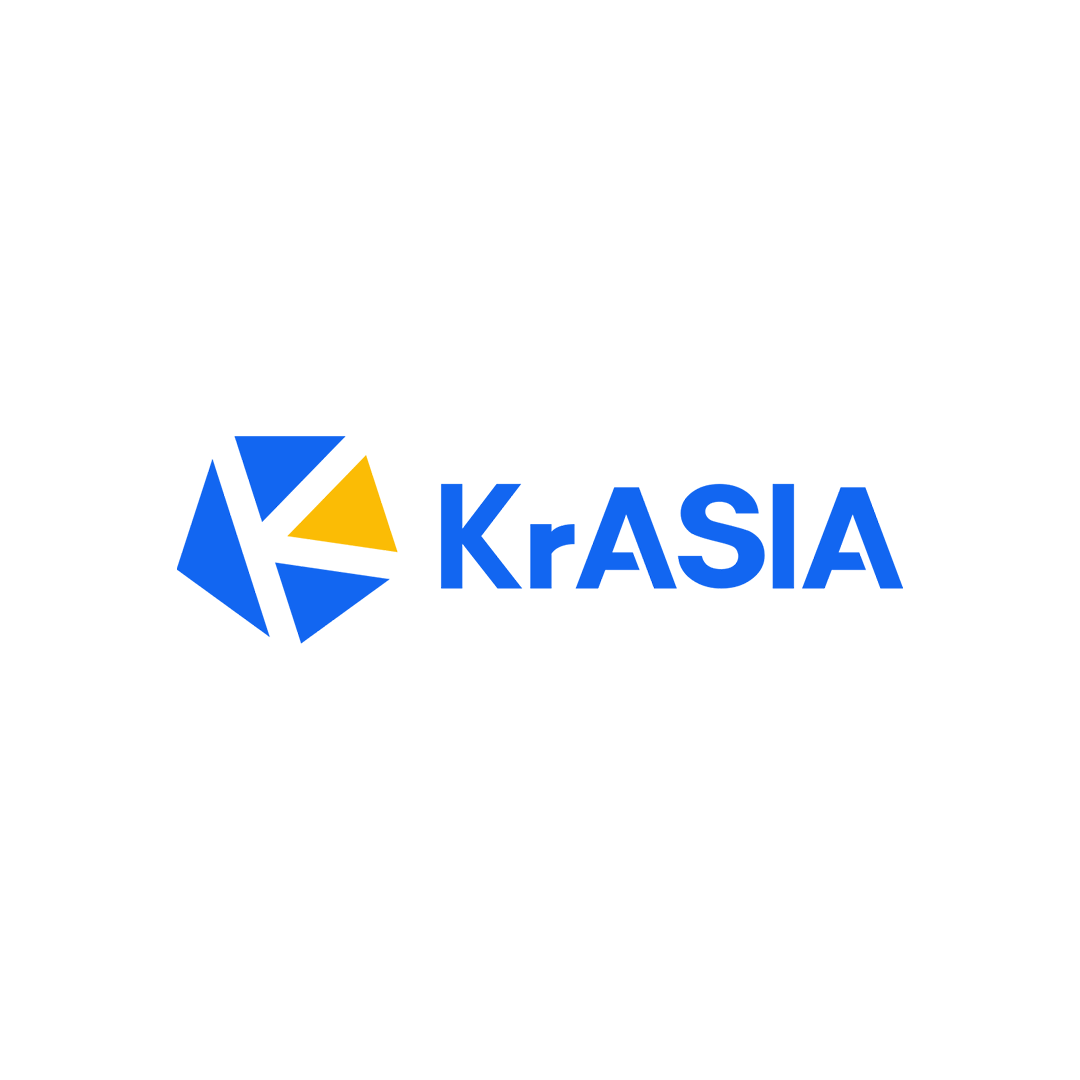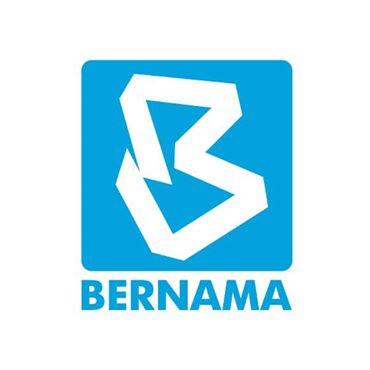After DJI, China’s founders find faith and ambition to drive the next wave of global hardware giants
18 hours ago
When US President Donald Trump waved the tariff stick, he might not have noticed that a Chinese company was already grabbing attention on the giant screens of Times Square in New York.
Among the hurried passersby under the massive billboards, there must have been users of the Plaud Note voice recorder. Sleek and compact, the device attaches to the back of an iPhone, plugs into ChatGPT to transcribe recordings, and sells for a starting price of USD 159. Not cheap, yet sales quickly surged past one million units.
By marketing and design, Plaud’s devices look from the outside as if they could be American or Chinese. In fact, it was founded in 2021 in Shenzhen. From the very beginning, founder Xu Gao articulated the company’s vision:
Ten years ago, such a slogan might have been dismissed as fantasy. Today, it’s an almost natural path for many young, ambitious entrepreneurs. As several founders told 36Kr, a hardware-focused startup in 2025 without a global strategy or a plan to build a premium brand would be lacking imagination.
In today’s turbulent global environment, that kind of imagination reflects a rare optimism and boldness. To trace its origins, you’d have to look back a decade.
DJI: A method and a modelIn 2014, The Wall Street Journal praised a two-year-old Chinese company as “the first Chinese brand to pioneer a major new global consumer product category.”
The recognition came with a caveat. More than a decade after China’s entry into the World Trade Organization, the country’s exports had reached RMB 14 trillion (USD 2 trillion), yet Chinese products were still known mainly for being affordable yet uninspiring, and certainly not “cool.”
Then came DJI.
For years, the biggest consumer drone maker in North America was 3D Robotics, founded by Chris Anderson, the former editor-in-chief of Wired. With better access to resources and networks, 3D Robotics looked far more formidable than DJI, seemingly a scrappy Shenzhen startup at the time.
But Anderson knew how fierce his Chinese rival was. In 2014, he publicly called DJI the first of a wave of Chinese companies that they will need to reckon with in the 21st century, and they have exceptional execution.
That same year, DJI’s blockbuster Phantom drone entered its second generation, pushing revenue past USD 1 billion.
Within a year, 3D Robotics retreated from the consumer drone market. Colin Guinn, its former chief revenue officer, said that stemmed from realizing how difficult it would be, fundamentally speaking, for a software-centric company from Silicon Valley to compete heads-on with a vertically integrated Chinese manufacturer.
Over the next decade, DJI captured more than 70% of the global consumer drone market. The company now generates annual revenue estimated at over RMB 50 billion (USD 7 billion), and with enviable profit margins, dispelling the notion that Chinese products must be cheap and low-margin.
“Chinese companies used to be afraid to set high prices, or didn’t have the ability. Then they gained the ability, but still didn’t dare. Now, they both can and dare,” said Mao Hanyong, founder of Satellai.
DJI not only showcased a new possibility for Chinese manufacturing but also inspired a generation of hardware entrepreneurs.
In 2017, Liu Jingkang, CEO of Insta360, told interviewers that he hoped his company could be recognized worldwide, “just like DJI.” By 2025, the 34-year-old had become the youngest CEO to ring the bell on Shanghai’s STAR Market. Insta360 had eaten into GoPro’s market for years to become the leader in 360-degree cameras, reaching a market cap of RMB 100 billion (USD 14 billion) within three months of its IPO.
These breakthroughs raise a question: why, in the decade since DJI, have companies like Anker Innovations, Insta360, EcoFlow, and others continued to emerge one after another?
The answer lies partly in a shared mindset among new founders like Xu, Liu, and Wang Tao (DJI’s founder): a global perspective on hardware, and the ability to connect directly with overseas consumers.
These ambitious young entrepreneurs were tired of chasing thin margins with copycats. They wanted to create best-in-class products, winning respect and loyalty from users around the world.
When Insta360 first hung its logo on its office building, Liu posted, in Mandarin, to his social feed: “Kid, you’ve come this far, now make this place your own.”
Such words aren’t youthful bravado. These founders know they stand at a historic inflection point.
“You ask, when did China start leading innovation? It’s when your capabilities keep building up until they can’t be suppressed anymore. That’s the tipping point,” Mao said.
As one investor put it:
This is the golden era for Chinese hardware entrepreneurs. For Xu, Liu, and their peers, the hunt for “golden fleece” has begun.
The DJI playbook, tested againEven in Shenzhen, a city crowded with tech giants, the Xili subdistrict carries special significance.
Along with Taoyuan and Yuehai, it forms a corridor that’s home to 20 unicorn companies with a combined valuation of more than USD 70 billion. No investor wants to miss it, just as no one can miss DJI’s Sky City headquarters, the district’s most striking building.
Designed by Norman Foster, the architect behind Apple’s theater, Sky City consists of two nearly 200-meter towers joined by a featherlike steel suspension bridge. When DJI moved in, its revenue had already reached RMB 30 billion (USD 4.2 billion), ten times the average among listed firms on Shenzhen’s ChiNext board.
For Shenzhen’s new startups, DJI looms large, offering a different playbook for hardware entrepreneurship.
Traditionally, Chinese hardware startups relied on supply chain strength to make cheaper “equivalents.” Electric toothbrushes became the poster child. With the right bet on a popular item, companies could hit revenue milestones within a few years. But the low barriers to entry soon made the sector overcrowded, with little room for brand moats.
DJI’s model was different. It seeks to pick a niche with technical barriers and higher price points, spend heavily on marketing, and dominate a global segment.
But in its first decade, DJI’s success was an exception. “The problem with the DJI model is the high upfront investment, and the focus on one big product that looks like a small market. It’s romantic, but some investors can’t make the numbers work,” said Lin Yuan, founder of Sylph, a startup making high-speed hair dryers and a former DJI employee.
Still, DJI’s seeds spread.
In 2017, Wang Lei, who led DJI’s battery R&D, left to start EcoFlow. His company struggled for years, burning cash without a hit product. To relieve stress, he read “The Three-Body Problem” repeatedly, preparing himself for a period of hardship.
EcoFlow’s persistence paid off in 2019 with the release of the Delta 1300 portable power station. While competitors needed more than eight hours to recharge, EcoFlow’s breakthrough technology cut that to about 1.6 hours. The product turned the company profitable, multiplying revenue tenfold in 2020. By 2023, riding Europe’s energy crisis, EcoFlow overtook industry veteran Sungrow to become the world’s top portable power brand, valued at USD 1 billion.
That same year, Tao Ye, another senior DJI executive, left to start Bambu Lab, betting on consumer 3D printing. Its first hit, the Bambu Lab X1, could print in 16 colors and run 70% faster than rivals. The product raised USD 7 million on Kickstarter, setting a record at the time for a premium device. Within four years, Bambu’s revenue soared to RMB 5 billion (USD 700 million).
Both EcoFlow and Bambu Lab demonstrated that DJI’s model could be replicated: invest heavily, pursue technical breakthroughs, and keep tight control of supply chains. Investors, once skeptical, began to believe that this strategy carried an attractive risk-reward ratio.
Today, DJI alumni with experience managing core products, supply chains, and global marketing are highly sought after by investors, even before they have a prototype.
“That’s the power of example,” Lin said.
As Gao Bingqiang, a professor at Hong Kong University of Science and Technology and an early DJI investor, put it:
Global brands, global vision, global innovationIn 47 BC, after a decisive victory at the Battle of Zela, Julius Caesar sent a three-word dispatch to the Roman Senate: “veni, vidi, vici”—Latin for “I came, I saw, I conquered.”
In some sense, today’s Chinese hardware entrepreneurs approach global markets with the same vision and ambition.
Back in 2012, DJI investor Li Zexiang asked Sequoia partner Michael Moritz how to build an international brand. While Chinese investors at the time dismissed drones as toys, Moritz suggested aiming straight at the US, specifically Silicon Valley’s elite and the leaders of US tech firms.
Through Microsoft veteran Harry Shum, DJI got its drones into the hands of Bill Gates and other luminaries. Gates even had to use an iPhone—something he normally avoided—because DJI products supported only iOS at the time.
That kind of endorsement was a masterstroke of marketing. But for an older generation of Chinese entrepreneurs, many of whom barely spoke English and came from humble backgrounds, such a tactic was completely foreign.
After China’s WTO entry in 2001, companies like Lenovo, Huawei, and TCL had already deployed large teams overseas. But early on, it was nearly impossible for Chinese hardware firms to establish global brand influence on their own. Most broke in by acquisition. Lenovo’s USD 3 billion purchase of IBM’s PC division in 2004 remains one of the most storied deals in business history. Haier and TCL soon followed with acquisitions of established Western brands.
Yet in many of those deals, Chinese buyers had to humble themselves even more than the sellers. In 2010, when Geely acquired Volvo, Li Shufu likened the deal to “a poor farm boy wooing a famous star.”
By contrast, startups over the past decade have postured themselves very differently.
Many of these founders grew up in middle-class families, received strong educations, and “knew what good things looked like.” Some studied in Hong Kong or overseas, riding the tides of globalization. Liu, for instance, eagerly bought a Google Cardboard VR viewer in 2014 to experiment. His oft-repeated motto, “You only live once,” resonates as much in Europe and the US as in China. DJI, meanwhile, had already hired foreign executives as early as a decade ago, something almost unheard of among Chinese firms back then.
“This generation of entrepreneurs has a global mindset,” said Loong, co-founder of health and fitness hardware maker Aeke. “They are highly educated, highly aware, and they’re not doing traditional businesses. Most are oriented toward technological innovation.”
Market dynamics also forced this shift. By the time they started their companies, the big consumer categories were already saturated. By 2018, China was producing 1.8 billion mobile phones, 300 million computers, and 200 million televisions each year—accounting for 90%, 90%, and 70% of global output, respectively.
“People naturally go after the big money first,” Mao said. “But when the main pathway gets blocked, you start looking for side paths.”
Consider 3D printing, for instance. One established Chinese company had no branding department for years, giving its biggest annual bonuses to Amazon sales managers and production heads. The founder wasn’t highly educated and had little to contribute in technical meetings, often staying silent. Still, he had grit, and with China’s supply chain behind him, he grew the company to more than RMB 1 billion (USD 140 million) in annual revenue with over RMB 100 million in profit.
But when Tao launched Bambu Lab in 2020, he knew that model wouldn’t work anymore. Even in the supposedly niche field of consumer 3D printers, China was producing nearly four million units a year, accounting for 90% of global supply.
Bambu succeeded only by launching a product two generations ahead of its rivals. Tao himself reportedly spent months living overseas with users to better understand their needs.
“In the past, supply chains made whatever was possible, and companies just sold it,” Mao said. “But in the last five or six years, people started asking what overseas consumers wanted, and then built that.”
This willingness to step into unfamiliar contexts has birthed new categories. Take garden robots. One pool cleaning robot founder had never been abroad and didn’t even own a pool at home. Yet he and his partner spent six months in the US visiting hundreds of single-family homes, sometimes posing as buyers just to get into backyards.
After mapping out the demand, a pool cleaning robot was launched with a price tag of over USD 1,000. One customer bought two units, one for each of his two homes, spending nearly USD 5,000 in the process. Within two years, the company had reached nine-figure RMB sums in revenue.
A similar story unfolded in robotic lawn mowers. Mammotion, founded by former DJI executive Wei Jidong, priced its mowers at least one-third higher than rivals like Husqvarna and Gardena. Investors told 36Kr the company may already be generating RMB 2 billion (USD 280 million) in annual revenue.
These cases highlight the generational shift in Chinese firms’ global strategies:
Global vision and technological innovation have become defining traits of this cohort.
One prime example is xTool. By focusing on laser engraving machines, a niche category, the company has already surpassed RMB 2 billion in revenue.
Founder Wang Jianjun first tested the crowdfunding model in 2014 with an educational robot that raised over USD 1 million on Kickstarter. Every new product since has debuted on the platform.
In 2021, Wang officially debuted xTool’s laser engravers, showcasing a product few Chinese had ever seen. Even his own vice president doubted the idea, thinking it would be too hard to pull off. But the engraver raised USD 2.6 million on Kickstarter that year, ranking seventh among all tech projects. Since then, xTool’s revenue has nearly doubled every year.
For Kickstarter’s cutting-edge user base, the appeal was clear. The product was creative, technically sophisticated, and worth paying a premium for.
And Chinese companies have learned to hit the bull’s eye with Western consumers. Ten years ago, raising USD 1 million on Kickstarter was considered a milestone. By mid-2025, Anker’s sub-brand EufyMake had raised over USD 40 million for a consumer UV printer.
Between 2014–2024, total crowdfunding raised by Greater China projects on Kickstarter grew more than twentyfold.
Today, the trajectory is clear: raise an angel round, build a prototype, launch on Kickstarter or Indiegogo, iterate based on feedback, and then scale up. If the first batch is delivered successfully, momentum snowballs.
Of course, both cheap RMB 60 (USD 8.40) massage guns and premium RMB 500 (USD 70) versions have their niches. But even cost-driven founders feel the growing hostility abroad toward “cheap Chinese goods.” They know the “bargain basement” model is getting harder to sustain.
“Everyone is trying to upgrade. But the genes and mindsets are very different,” Lin said. “Every era has its entrepreneurs.”
The supply chain’s spillover powerOne fact is beyond dispute: without China’s supply chain, there would be no DJI, no Insta360, no EcoFlow.
By 2025, a hardware founder standing in the middle of Shenzhen’s Huaqiangbei electronics district could find, within a one-kilometer radius: 1,350 design firms, 3,200 R&D providers, 1,260 prototyping shops, and 3,480 mass production suppliers.
As a local museum’s blue plaque puts it:
That kind of speed has been normal in Shenzhen for more than a decade. Back in 2015, an entrepreneur could find 400 different mobile phone parts in Shenzhen within two days, while that same process could take at least two months in Silicon Valley.
The city, built on hustle, opportunism, and boldness, made it possible to cobble together knockoff phones and PCs from semi-assembled parts bought at Huaqiangbei stalls, ship them to Africa, and sell them to governments for fat margins.
“At the time, everyone was just making stuff. Nobody had a strong sense of brand,” said Koon, founder of hardware startup CubyFun.
Just 22 kilometers away, in Longhua, Foxconn was shipping hundreds of thousands of iPhones a day. Apple’s famously strict standards allowed only 0.02 millimeters of scratches on an iPhone’s aluminum frame, finer than a human hair.
This was China’s supply chain in duality: the world’s best at high-precision production, but accessible to most entrepreneurs only on the cheap and rough side.
That boundary began to break in 2010.
That year, Lei Jun founded Xiaomi with a mission of making “the world’s best smartphone at half the price.” Its first phone, produced by Foxconn and Inventec, packed flagship specs but sold for just RMB 1,999 (USD 279.9). Nearly eight million units were sold.
That same year, Oppo and Vivo, then unknown firms in Dongguan, released their first smartphones. Huawei, then focused on carrier equipment, also prepared to go big in consumer phones.
Within five years, Chinese companies held four of the top six slots in global smartphone shipments, trailing only Apple and Samsung.
For the first time, Chinese manufacturing had broken out globally.
Smartphones are the most intricate of consumer electronics. Their massive output supercharged China’s supply chain, and the capabilities soon spilled over into other hardware.
“China’s supply chains are so strong because of smartphones,” Koon said. “That entire ecosystem overflowed into other smart devices.”
Overflow meant that once smartphones drove up component production, costs plunged across the board.
In 2018, Beijing-based entrepreneur Gao Wangshu noticed that Xiaomi had just launched a dual-frequency GPS phone, the Mi 8. Previously, such chips were specialized, expensive, and limited to niche applications. By 2022, when Gao moved to Shenzhen to start a robotic lawn mower company, the full chip set cost just over RMB 300 (USD 42). High-end NPUs (neural processing units), once reserved for flagship phones, had become so cheap they were practically everywhere.
That enabled a uniquely Chinese invention: boundary-free robotic lawn mowers.
This became a pattern across industries. In less than five years, domestic blowdryer maker Laifen slashed Dyson’s Chinese market share from 36% to 7%. “When I started in 2017, custom high-speed motors cost hundreds of RMB. By 2025, after years of joint optimization with suppliers, they are down to one-tenth the price, with over 95% yield,” Lin said.
As early as 20 years ago, journalist James Fallows described Chinese suppliers as driven by an unstoppable force, always searching for new clients.
At first, their products flooded into Chinese cities. By 2015, cheap “Made in China” goods began pouring into Western households through cross-border e-commerce platforms. That was the golden moment for grassroots entrepreneurs, with no branding needed.
But the tide of commodity goods receded quickly, and traditional exporters struggled. Suppliers had to start valuing the small, scrappy startups they once ignored. After all, Pearl River Delta factory owners had bore witness to some of the unlikeliest of success stories: a small power supply maker doubling output overnight thanks to a single 3D printing client, or a student project at the XbotPark incubator suddenly scaling to mass production.
Take for example Hongjing Optoelectronic Technology, an optical supplier in Zhongshan, Guangdong. In 2015, its founder Zhao Zhiping met Liu, then still a college senior. After Insta360 launched its first Nano camera in 2016, Hongjing bet big on the startup.
It paid off. By 2022, Insta360 alone accounted for RMB 140 million (USD 19.6 million) of Hongjing’s RMB 120 million (USD 16.8 million) in top five customer sales from the year prior, doubling revenue in a single year. By 2023, Hongjing’s revenue exceeded RMB 700 million (USD 98 million), with Insta360 contributing nearly half. Its net margin hit 15% in 2024, double the rate at Sunny Optical Technology, China’s largest smartphone lens supplier.
In March, Hongjing went public on Shenzhen’s STAR Market, three months before Insta360 itself. From barely RMB 100 million in revenue to a listed company in three years, the supplier’s rise was extraordinary.
Insta360’s other suppliers also reaped rewards. One, Nolato, had previously only served top-tier Japanese and European brands. After Insta360’s One X camera launched in 2017, its monthly sales tripled within a year, leaving Nolato scrambling to build new molds.
Globally, 30% of small appliances are produced in Cixi, a county-level city of fewer than two million people. Foshan, Guangdong, makes 16% of the world’s large appliances. “Chinese factories excel at following detailed instructions,” said Li Yong, founder of companion toy maker Haivivi. “Give them a 100-page manual, and they will execute it to the letter.”
Compared with a decade ago, Chinese suppliers have also climbed higher. In just five years, Chinese firms grew their share of OLED screens from 3% to 45%, displacing South Korean dominance. Shenzhen-based Goodix invented the under-display fingerprint sensor, now a standard across Android phones.
With greater control over global pricing for key components, suppliers now crave startups with imagination and flair—companies that can sell premium products worldwide at prices once unthinkable for Chinese brands.
The believers behind the dreamIn the summer of 2025, Haivivi announced it had raised nearly RMB 300 million (USD 42 million), a record for its sector. Yet just two years earlier, it nearly went bankrupt.
In 2023, Haivivi’s Li had failed to raise money in Beijing. The company was deep in debt, social security payments for staff had lapsed for a year, and he was ready to shut down, even offering to halve the valuation to attract buyers.
But a financing intermediary told him about a Hong Kong professor looking for artificial intelligence-related hardware projects. Li decided to take one last chance, flying south to Shenzhen.
That professor was Gao Bingqiang, an angel investor with a reputation as Shenzhen’s most beloved backer of young founders. A co-founder of the XbotPark incubator along with Li Zexiang and Gan Jie, Gao had early stakes in DJI and many other hardware successes.
When Li met him, he found a smiling old man, not the stern academic he had imagined. “Professor Gao has all these whimsical ideas and a great sense of humor,” Li said. Gao’s WeChat bio reads in Cantonese simply as “the most important thing is to have fun.”
After an hour’s conversation, Li thought he might secure RMB 1–2 million (USD 140,000–280,000). Instead, Gao immediately offered USD 1 million, telling Li: “Write up an agreement and I’ll sign it.” No due diligence, no back-and-forth. The money arrived within a month.
“Maybe there really are people in this world who don’t care about money, they just care about passion,” Li said.
Two years later, Haivivi was considered an easy fundraising case. But Li never forgot the day Gao saved his company: “Without him, we’d be dead.”
Ten years ago, such chances were rare. Investors widely believed hardware was like gambling: high cost, high risk, low return. “Why not put the money in internet companies instead?” one fund partner asked a colleague in 2015.
It was only idealists, like the professors at Hong Kong University of Science and Technology (HKUST), who put money behind young founders. In 2014, they launched XbotPark in Songshan Lake, investing just a few million RMB per project, enough to help a company build a prototype without dying early. DJI, Narwal, Liberlive, Agilex Robotics, and ePropulsion all passed through its doors.
Narwal nearly didn’t make it. Founder Zhang Junbin was just 26, dismissed as a naïve student. “You’re just a kid, what do you know about supply chains?” one investor scoffed. Others compared him unfavorably to rivals Ecovacs and Roborock.
When Narwal first tried to raise funds, investors demanded aggressive financial guarantees. In the end, Li Zexiang and his fellow professors invested their own money to keep it alive. In 2019, Narwal launched its J1 mop-and-vacuum robot, which sold RMB 20 million (USD 2.8 million) in its first year. Soon, self-cleaning mops became an industry standard feature.
By 2020, Narwal was too valuable for early-stage funds to afford. In five years, it raised eight rounds, pulling in backers like Tencent and ByteDance, with its valuation surpassing RMB 10 billion (USD 1.4 billion).
The successes of Anker, Insta360, and others gradually changed investor attitudes. “This year is a mini spring for hardware. It’s reviving the whole market,” one investor told 36Kr.
Competition for deals has reached internet-era frenzy. One lawn mower startup raised three rounds in six months, totaling over RMB 100 million. Another leading hardware firm had investors lining up without even holding a roadshow.
Behind today’s prosperity lies a decade of hardship, one many firms would not have survived without their early backers. As Li Zexiang once put it:
Now, the road is crowded with fellow travelers.
Eighty years ago, in postwar Japan, Sony co-founder Akio Morita declared his ambition to overturn the world’s perception of “Made in Japan” as cheap and shoddy. Today, DJI’s Wang voices a similar determination:
That conviction, spanning time and borders, is alive again in a new generation of Chinese entrepreneurs. With the support of world-class supply chains, investors who still believe in ideals, and vast global markets, their stage has never been bigger.
KrASIA Connection features translated and adapted content that was originally published by 36Kr. This article was written by Yuan Silai for 36Kr.
...Read the fullstory
It's better on the More. News app
✅ It’s fast
✅ It’s easy to use
✅ It’s free









